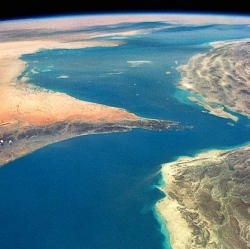
The internet is still under construction, and it looks as if its next step, after undersea cables and fibre-optic networks for cities, could be satellite. Although satellites carry barely 1% of global web traffic now, there’s a space race on to increase that.The major players include Richard Branson-backed OneWeb and SpaceX.
Satellites are generally thought of as bad for internet access, and a last resort used by remote areas, such as island communities. Although over 2,000 satellites around Planet Earth handle TV, imaging, weather, Earth observations and GPS, they cost £45 million (around $65 million, AU$94 million) per launch and host precious little two-way traffic. There’s a latency issue, a half-second delay makes video calling almost impossible, for example.
However, the tech is changing. The size and cost of satellites is drastically decreasing, with so-called cubesats, nanosats and smallsats, some as little as 10 x 10 x 10cm, costing about £40,000 (around $57,000, AU$83,000) to make and as little as £85,000 to launch.
What is OneWeb planning?
OneWeb plans to launch 700 satellites into low-Earth orbit, mostly on the back of Virgin Galactic’s (one of its investors) LauncherOne rocket, which takes off from under the wing of a Boeing 747.
So far it’s inked a deal with Virgin Galactic to launch the first 39 of its satellites on LauncherOne, with an option for 100 more (though it might also launch on SpaceX rockets). Its satellites are being built by Airbus, and should start launching in 2018 to sit about 500-750 miles out. At 6Gbps apiece, 700 satellites would equal a total capacity of about 4.2Tbps.
What about SpaceX?
SpaceX plans to launch a constellation of 4,000 satellites around the globe (also 500-750 miles up) to beam a Wi-Fi signal to the most remote regions, in doing so turning his company into a global communications provider. However, the cost of creating such a vast network makes it just as ambitious as Musk’s stated aim of one day helping colonise Mars.
It’s all about the cost of launch (on SpaceX’s Falcon 9 rocket) and the speeds of the antennas on the satellites, but the ever-ambitious Musk has even talked up using laser data transfer. NASA is currently testing Optical Payload for Lasercomm Science (OPALS), which has so far managed to send 50 megabits per second from the ISS to California. With the help of Google, SpaceX is planning something big for 2020, but so far it’s still at the conceptual stage.
